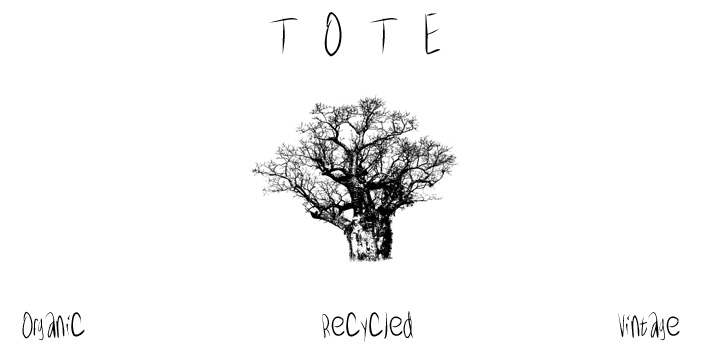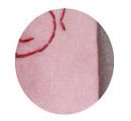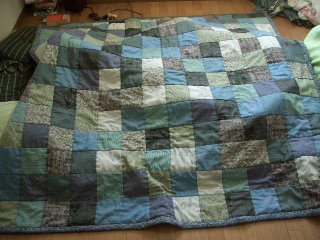Friday, June 30, 2006
Follow up on the promoting online post
I was browsing fashioncapital.co.uk and found a fantastic article on promoting the websites of DE's. It covers some of what I have been doing myself and more. Check it out here.
Wednesday, June 28, 2006
Getting personal
QROSSOVER

Remember when I met designers Toshinari and Asuka at the Design Festa? For those who don’t, they design tees under the label QROSSOVER? Well their website is finally up and running. Although it’s in Japanese, it’s still possible to look at what they’re selling. Which are skulls on tees mainly. And remember it’s for the Japanese market not western.
Tuesday, June 27, 2006
When is a Jacket more than a Jacket?
I was reading a website about some jacket that had been designed by some designer. Looking at it made me think. "It's just a Jacket. What makes it different from the rest?' And From what I could see, there was no difference.
Well, what makes a jacket different from the rest? .
There are a few differences. Colour, the fabric used, the pattern, the quality of the sewing, tailoring and most importantly the brand.
If I'm looking for a Jacket, or any new item of clothing it has to grab my attention. I won't buy it just because I need a new (insert piece of clothing here).
I want something that has been cut from a good pattern. Something that has been made with thought. I must admit I usually play it safe when I'm buying something new, and stick with my favorite designers like Francis Kwamee in Melbourne or Takeo Kikuchi in Tokyo. Usually these designers are selling more that just a jacket or a tee. Their designs are different and fit well. And I'm willing to pay for something that is different. However I might add I rarely purchase new clothes due to being ketchy and wanting to save some money for a change.
What about you? Are you the kind of person who buys a (insert new piece of clothing here) just because it's there and you need it? Or do you carefully choose that new thread?
Well, what makes a jacket different from the rest? .
There are a few differences. Colour, the fabric used, the pattern, the quality of the sewing, tailoring and most importantly the brand.
If I'm looking for a Jacket, or any new item of clothing it has to grab my attention. I won't buy it just because I need a new (insert piece of clothing here).
I want something that has been cut from a good pattern. Something that has been made with thought. I must admit I usually play it safe when I'm buying something new, and stick with my favorite designers like Francis Kwamee in Melbourne or Takeo Kikuchi in Tokyo. Usually these designers are selling more that just a jacket or a tee. Their designs are different and fit well. And I'm willing to pay for something that is different. However I might add I rarely purchase new clothes due to being ketchy and wanting to save some money for a change.
What about you? Are you the kind of person who buys a (insert new piece of clothing here) just because it's there and you need it? Or do you carefully choose that new thread?
Monday, June 26, 2006
That dirty word: Branding
Branding. Naomi Klein wrote a book about it in 2000. She covered issues relating to Brands and choices consumers have. But I don’t recall her covering the effects branding has on indie designers and their choices. In particular the ones who are just starting out. Recently but more so in the US there is a growing shift to eco-labels and organic lines. Brands like NIKE and department stores such as Marks & Spencers are attempting to grab a piece of this pie, introducing eco and organic lines too.
It's great these Brands are making changes. Though it may be more for profit, rather than for environmental reasons. What happens to those small indie designers who have been eco since they began, and for the right reasons? Will they be swallowed up by the big fishes or can they swim fast enough to stay ahead? And what choices are there to stay ahead. Call me a cynic, but I only see one. Become a BRAND. I am not talking about a sweatshop making, mass marketing, self-promoting label. The idea I have is a hybrid of indie and brand. One that is ethical, conscious of the environment, the labor it uses and profitable at the same time. Labels such as WORN AGAIN CIEL and preloved are examples of this.
It has come to the point where the majority of consumers are obsessed about brands. And living in Japan I see it even more. I have seen many construction workers swaggering down the street clutching a Vuitton wallet. That is the power of branding. It has made consumers believe that a brand or even a label is necessary on clothes. A retailer at the Design Festa even told me that people want to see a label. Consumers want to see who made it.
Yes the label is vital. It says who the designer or company is. But when it reaches the extent that shirts are covered with brand names and logos, then it has gone too far.
Is it possible to become an indie brand? Globalization has caused everything to be like McDonalds. The same taste wherever you go. Consumers are getting sick of that. They want to have individual pieces but still have the brand. Labels such as RMJ and BAPE are filling this gap with expensive short runs. They have the cash to market themselves and quash pesky indie designers. Sometimes I feel like that pesky indie designer. Big ideas but little finances to keep up with the big boys. Sometimes I find myself wondering 'how am I going to do it?'
It's great these Brands are making changes. Though it may be more for profit, rather than for environmental reasons. What happens to those small indie designers who have been eco since they began, and for the right reasons? Will they be swallowed up by the big fishes or can they swim fast enough to stay ahead? And what choices are there to stay ahead. Call me a cynic, but I only see one. Become a BRAND. I am not talking about a sweatshop making, mass marketing, self-promoting label. The idea I have is a hybrid of indie and brand. One that is ethical, conscious of the environment, the labor it uses and profitable at the same time. Labels such as WORN AGAIN CIEL and preloved are examples of this.
It has come to the point where the majority of consumers are obsessed about brands. And living in Japan I see it even more. I have seen many construction workers swaggering down the street clutching a Vuitton wallet. That is the power of branding. It has made consumers believe that a brand or even a label is necessary on clothes. A retailer at the Design Festa even told me that people want to see a label. Consumers want to see who made it.
Yes the label is vital. It says who the designer or company is. But when it reaches the extent that shirts are covered with brand names and logos, then it has gone too far.
Is it possible to become an indie brand? Globalization has caused everything to be like McDonalds. The same taste wherever you go. Consumers are getting sick of that. They want to have individual pieces but still have the brand. Labels such as RMJ and BAPE are filling this gap with expensive short runs. They have the cash to market themselves and quash pesky indie designers. Sometimes I feel like that pesky indie designer. Big ideas but little finances to keep up with the big boys. Sometimes I find myself wondering 'how am I going to do it?'
Sunday, June 25, 2006
ONLINE PROMOTION
I’ve been thinking recently about how to promote my ‘TOTE’ label online and get traffic to my store. But apart from just ‘thinking’ I’ve put some ideas into action, such as finding other DE’s online and asking if they are interested in a DE linkup. I believe the more we (DE’s) link up with one another the easier we will be seen on the web.
In addition to that I have been talking to Julie about having a section for DE’s only on Coutorture, which has happened if you take a look at the communities section. I will also will be writing for the Sydney based Camarilla website in the not so distant future.
Apart from this I have ideas such as submitting an article to Crapazine, a web based magazine that features designers, artists and bloggers. And have considered using Google’s Ad Sense program.
Style Bites suggests contacting fashion assistants and sending in press kits or gifts that may one day end up in a photo shoot. That’s something I’ll keep for later. Till then I will focus online and more
Saturday, June 24, 2006
Archive photos
Sunday, June 18, 2006
Links to TOTE designs online store
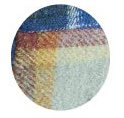

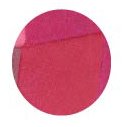
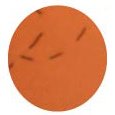
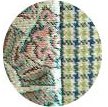
Over the next week or two I will be posting my bags on the left column of my blog. To view the bag in its entirety and pricing details, just click on the photo.
Saturday, June 17, 2006
Jeans Review - Red Monkey Jeans

Whilst flicking through my favourite fashion mag 'Popeye' I discovered the next 'must have' jeans. RMC or Red Monkey Jeans are the new black! After a quick search on the net I found reviews and sites selling them online, but no offical RMC site.
Apparently along with Evisu Jeans, they are the one the most sought after jeans at the moment. What makes them so special? Well they only make 50 of each pair, making them unique. And you can have them... for $500.
Martin Ksohoh is the man who developed the concept back in 2001 whilst in Hong Kong. The company uses designs from japanese wood block prints that are embroidered on the jean pcokets. The japanese denim has been processed in such a way that it is not harmful to the environment. However I'm not buying that one!
If you want to buy a pair check out this website which is selling RMC starting from $99! The site also sells BAPE and Evisu. However, if other websites are selling them for $500 then why is this website selling then so cheap? I'm thinking ...FAKES!! You can also purchase them here for around the same price.
Friday, June 16, 2006
Minks - treatment and disposal - transparency and education
I’ve been writing about how there should be more transparency in the fur industry and was seeking some more information about where the carcasses go, and treatment of the animals whilst they are living. I decided to do some research of my own. I found the Fur commission, which is related to MINKS ONLY. This information comes directly from their site.
‘Fur Commission USA represents 420 mink-farming families on 330 farms in 28 states (Americia), producing 2.6 million of the finest mink pelts annually, worth over $120 million. Our volunteer board and committees work to ensure superior standards of animal husbandry through our own certification program, and to educate the public about responsible fur farming and the merits of fur ‘
I found this website to be informative with respects to farming. It says the feed it uses is leftovers from human food production. It claims this reduces the environmental impact of the agricultural sector as a whole. I like this point. I am all for recycling and I hate food wastage.
It also talks about providing ‘quality care’ as quote, ‘PROVIDING ANIMALS with humane care is an ethical obligation of all livestock farmers, while for mink farmers it also makes good business sense, since the healthiest animals produce the finest pelts.’ Sadly however, the treatment of the animals is due to the affect it has the quality of the pelts. I wish this were the same for chicken eggs too.
It goes onto say that members can participate in a Merit system. ‘The Merit Award seal recognizes commitment to humane treatment in all aspects of fur farming, including: Vigilant attention to nutritional needs Clean, safe and appropriate housing Prompt veterinary care Consideration for the animals' disposition and reproductive needs Elimination of outside stress Inspections to verify compliance are carried out by independent veterinarians, and those farms that pass are authorized to use the Merit Award certification seal until the next mandatory inspection. On the rare occasion that a farm fails the inspection, the farmer will be required to make changes or relinquish membership.’
It seems that the farmer is only penalized by relinquishing membership. Furthermore I am given the impression a farm that has failed inspection can sell the fur regardless.
As for Euthanasia, minks are given either pure carbon monoxide or carbon dioxide. A mobile unit goes to the minks farming shed rather than transporting them. This is to reduce animal stress.
And lastly the carcass. ‘Although fur is the primary product of farming, nothing is wasted. An important secondary product is a highly valued oil produced from the mink's thick layer of subcutaneous fat. Mink oil is used to condition and preserve leather, and also in the manufacturing of hypoallergenic facial oils and cosmetics. The carcasses are rarely eaten by humans as the scent gland gives the meat a flavor which most people don't enjoy. But they still have their uses. Some farmers sell them as crab bait, or give them to wildlife preserves, zoos or aquariums. Others will use them to make organic compost. Or they may be rendered down to provide raw materials for a wide range of products, from pet food and organic fertilizers to tires, paint and even cosmetics. Last but not least, the nutrient-rich manure from fur farms is in heavy demand as a natural crop fertilizer.’
I am relieved to find the farmers who are part of THIS COMMISSON don’t waste the mink’s carcass and treat them humanly. It’s impossible to inspect every farm. So I will take their word for it.
I recommend checking out the Fur Commission website and reading some of the resources they provide. Sadly this commission is only for America. During my search I also found these two BBC links, which strengthen my recommendations for the fur industry.
McCartney attacks China over fur (NOV 2005)
Inside the fur farms (NOV 1999)
This industry is not perfect and is surrounded by controversy. Just take a look at some of the comments on Almost Girl. In conclusion, if this industry wants to continue then it needs to become more ethical and educate the public about what it does. I am not talking about ‘spin’ here, just the truth. There is a need to do more work in maintaining a high standard of treatment for animals all across all types of fur farms. I recommend that farmers who do not meet the standards should be barred from selling their furs until they have lifted their standards. In addition to farming standards, furs that are sold to produce clothes, rugs or whatever should have a label that indicates the animal that was killed, was treated humanly.
‘Fur Commission USA represents 420 mink-farming families on 330 farms in 28 states (Americia), producing 2.6 million of the finest mink pelts annually, worth over $120 million. Our volunteer board and committees work to ensure superior standards of animal husbandry through our own certification program, and to educate the public about responsible fur farming and the merits of fur ‘
I found this website to be informative with respects to farming. It says the feed it uses is leftovers from human food production. It claims this reduces the environmental impact of the agricultural sector as a whole. I like this point. I am all for recycling and I hate food wastage.
It also talks about providing ‘quality care’ as quote, ‘PROVIDING ANIMALS with humane care is an ethical obligation of all livestock farmers, while for mink farmers it also makes good business sense, since the healthiest animals produce the finest pelts.’ Sadly however, the treatment of the animals is due to the affect it has the quality of the pelts. I wish this were the same for chicken eggs too.
It goes onto say that members can participate in a Merit system. ‘The Merit Award seal recognizes commitment to humane treatment in all aspects of fur farming, including: Vigilant attention to nutritional needs Clean, safe and appropriate housing Prompt veterinary care Consideration for the animals' disposition and reproductive needs Elimination of outside stress Inspections to verify compliance are carried out by independent veterinarians, and those farms that pass are authorized to use the Merit Award certification seal until the next mandatory inspection. On the rare occasion that a farm fails the inspection, the farmer will be required to make changes or relinquish membership.’
It seems that the farmer is only penalized by relinquishing membership. Furthermore I am given the impression a farm that has failed inspection can sell the fur regardless.
As for Euthanasia, minks are given either pure carbon monoxide or carbon dioxide. A mobile unit goes to the minks farming shed rather than transporting them. This is to reduce animal stress.
And lastly the carcass. ‘Although fur is the primary product of farming, nothing is wasted. An important secondary product is a highly valued oil produced from the mink's thick layer of subcutaneous fat. Mink oil is used to condition and preserve leather, and also in the manufacturing of hypoallergenic facial oils and cosmetics. The carcasses are rarely eaten by humans as the scent gland gives the meat a flavor which most people don't enjoy. But they still have their uses. Some farmers sell them as crab bait, or give them to wildlife preserves, zoos or aquariums. Others will use them to make organic compost. Or they may be rendered down to provide raw materials for a wide range of products, from pet food and organic fertilizers to tires, paint and even cosmetics. Last but not least, the nutrient-rich manure from fur farms is in heavy demand as a natural crop fertilizer.’
I am relieved to find the farmers who are part of THIS COMMISSON don’t waste the mink’s carcass and treat them humanly. It’s impossible to inspect every farm. So I will take their word for it.
I recommend checking out the Fur Commission website and reading some of the resources they provide. Sadly this commission is only for America. During my search I also found these two BBC links, which strengthen my recommendations for the fur industry.
McCartney attacks China over fur (NOV 2005)
Inside the fur farms (NOV 1999)
This industry is not perfect and is surrounded by controversy. Just take a look at some of the comments on Almost Girl. In conclusion, if this industry wants to continue then it needs to become more ethical and educate the public about what it does. I am not talking about ‘spin’ here, just the truth. There is a need to do more work in maintaining a high standard of treatment for animals all across all types of fur farms. I recommend that farmers who do not meet the standards should be barred from selling their furs until they have lifted their standards. In addition to farming standards, furs that are sold to produce clothes, rugs or whatever should have a label that indicates the animal that was killed, was treated humanly.
Thursday, June 15, 2006
FUR II
I would like to respond to some of Julie's comments made on Almost Girl.
My comments (yet again rushed due to time constraints) are not to threaten, but like Julie's to cause thought and reflection about the fur industry. I will try and keep this revolving around the fur issue since it is Fur Fashion week.
Let me highlight once again. This is not a catfight readers. And I will not respond to bitchy and nasty comments. But I am happy to be educated with facts.
It is important to analyze and question issues that are important to us all. For if we didn't, then where would this world be?
Julie. You made the following comment...
How it deals with those sourcing issues is what can make it immoral.
Good point here, but do you mean sourcing fur from farms where the animals have been treated inhumanly or at times skinned alive by hunters? (I would be interested to know about their methods if anyone has any information about it.)
I'm not sure what the demand/ supply ratios for these products are. But like many companies I'm sure, during times of shortages companies would turn to unethical methods in order to turn a profit. If fur is to be sold in the market place, then it should be farmed in a humane manner. And transparency is a must to keep animal activists and concerned consumers satisfied.
Through my education and my own work on a farm in Colorado I raised, slaughtered, and ate animals that had been in my own care. This experience taught me a kind of appreciation for my own consumption habits as they relate to a larger life cycle.
Living on a farm has given you a greater insight to the food chain and the importance of not wasting food.
So I am sure you can see importance of using the whole animal rather than just part of it. I could not find any information at http://www.iftf.com or at http://www.fur.org/ on carcass disposal or what happens to the carcass after it has been skinned. So why use it? If anyone finds information about this, please tell me. Maybe I missed it on their sites.
You also write about the longevity of fur and heirlooms...
In fact, I actually prefer (fur) to many fabrics because they are generational pieces that become heirlooms.
Quilts can also become heirlooms, can be made from recycled fabrics and can even be made by family members, making it more valuable than a fur.
Most people, yes even PETA activists live in such a state of disconnect from our planet that they are forced into emotional relationships with the many living creatures that live below us in the food chain.
I agree with you that people live in a state of disconnect. Generally speaking that is. But on the other hand there are a lot of people out there that really know what's going on in the world. Just check out some blogs
And as a whole, yes we don't want to relate what we eat to animals and we do over consume. Just take a look at the US and Australia’s rising obesity problems. We need to be more aware of what we consume and consider if it's worth continuing. As I see it, fur as a luxury is one of those products that needs to be discontinued.
And vegetarians, don’t kid yourself into thinking that your consumption habits are a get out of jail free card, the mango you enjoyed wasn’t grown in your neighbors backyard.
I disagree with this statement. Vegetarians are probably more aware of food miles than the average Joe sitting in front of the TV munching away on their snacks. FiftyRX3 is and example of that. She is constantly discussing food miles and organic food.
There are many issues that surround this industry and at times it can be difficult to form an opinion from all the information that is out there. Read the facts from both sides, plus independent sources and form your own logical opinion. You’re entitled to it.
Wednesday, June 14, 2006
Fur Fashion Week 2006 - Here's my 2 cents!
Julie, Phil and Jennifer over at Coutorture are covering Fur Week in America. They have invited bloggers to have their say. Here's mine...
I am not interested in wearing fur and making products using fur. If people want to wear a dead animal to keep them warm, that’s fine by me. I believe in freedom. People should be allowed to wear what they like. I’m not the kind of person who’s gonna throw red paint on them! I just think about doing it instead. Your probably saying ‘here we go…not another animal rights person getting on their soapbox!’ Yes it’s true, but I will admit I am not vegetarian, which makes me hypocritical. So if I eat meat, then why complain about fur?
See, I use to be vegetarian. For about 5 years. At the time there was not much out there for vegos. I was forever soaking lentils overnight and cooking them for hours! But that’s not the reason why I stopped. I like cooking!. It was because I was constantly lethargic, lost heaps of weight and struggled to put it back on. I consulted a dietitian about it but it still didn’t work for me. I decided that my body was not built for being a vegetarian, and gradually went back to eating meat. Now I eat meat about once or twice a week. I don’t really like doing it. I also think it stinks during the cooking process. Usually I eat minced meat as it looks like it didn’t come from an animal. So that’s my vego background! And vegos and vegans, please respect my eating habits, like I do yours. And don’t leave nasty comments.
Okay. Back to fur.
There are some facts about fur from the Animal Protection Institute. Some of these you may already know.
More than 50 million animals are violently killed for use in fashion every year.
Methods used to kill animals for their fur include gassing, electrocution, and neck breaking. Fur-bearing animals are also caught and killed in barbaric body-gripping traps.
Neither fur nor fur trim is a byproduct of the meat industry. Rabbit fur is often falsely identified as a byproduct of meat production. The truth is, few rabbit skins are obtained from slaughterhouses, which more often dispose of the undesirable pelts of rabbits bred to make meat. Fur comes from animals who are factory-farmed or trapped purely for fashion.
Cat and dog fur can enter the U.S. market undetected and be sold as fur trim. While there is a ban on the import of domestic dog and cat fur in the U.S., the animal’s fur may be mislabeled or the item may be valued less than $150, and thus not be required to carry a label identifying the source of the fur.
And here is some information from the International Fur Trade Federation
North American beaver (Castor canadensis)
This large, semi-aquatic, wild animal is from North America. The long guard hairs are very dark brown to reddish or “blonde”. Beaver is often plucked or sheared by designers to show the soft underfur and reduce the weight of the item. It is often used for trimmings and full fur garments.
Chinchilla (Chinchilla lanigera)
Originating from South America, the chinchilla is now totally protected in the wild. It is farmed in North and South America and Europe. This very soft and silky fur is mainly grey, but there are some black, white or beige-white natural colours. It is used mainly for small articles and trimming but also for full-length garments.
Finn raccoon (Nyctereutes procyonoides)
Today, finn raccoon is predominately farmed in Finland. A thick and luxurious fur with a natural colour range from beige to brown to reddish brown, it is often used in trimmings and sports coats, including menswear.
This site also contains information about farming methods. It states
‘Mink are generally housed in sheds four metres wide. These sheds are open-sided with roofing panels. They provide normal temperature and light conditions, while protecting against direct sunlight, wind and rain. Wire cages are placed in rows in the sheds. Foxes are housed in similar sheds. In both cases, the cages are raised off the ground to ensure good hygiene. These cages give the farm animals sufficient space for normal movement and investigative behaviour.’
So the sheds are four meters wide, but what about the specifications for the cages themselves? That’s what I want to know. It leaves me thinking ‘maybe these animals are caged like battery hens? And what about the slaughtering methods? I couldn’t find any. There should be a bit more transparency for an industry like this one.
So that’s my rather rushed 2 cents on the subject. What’s yours?
The answer to yestedays's quiz
Is C!!!
Tuesday, June 13, 2006
Retailer update..
So far I have sent the retailer an email regarding the Design Festa and selling bags at his shop. It was written in BAD Japanese. That was about two weeks ago now.
Last week. I still had not heard from him, so thought 'follow up call'. I made contact with him. 'GOD' I thought. 'Now what am I gonna say? ' I basically reintroduced myself, which he promptly remembered. We talked briefly, and then decided on asking a Japanese friend of mine to help with the communication. So my friend, Tomomi has sent him an email in Japanese. Now I am just waiting to hear from him.
Last week. I still had not heard from him, so thought 'follow up call'. I made contact with him. 'GOD' I thought. 'Now what am I gonna say? ' I basically reintroduced myself, which he promptly remembered. We talked briefly, and then decided on asking a Japanese friend of mine to help with the communication. So my friend, Tomomi has sent him an email in Japanese. Now I am just waiting to hear from him.
Polo top quiz
This weeks quiz is about men's fashion.
According to the popular men's fashion bible, 'Popeye'.....
A) Shibori polo tops are very chic
B) Polo tops are passe.
C) Polo shirts should be worn with a tie...very chic...
See you tomorrow for the answer.
According to the popular men's fashion bible, 'Popeye'.....
A) Shibori polo tops are very chic
B) Polo tops are passe.
C) Polo shirts should be worn with a tie...very chic...
See you tomorrow for the answer.
Friday, June 09, 2006
Design Festa interview
Well I thought I ended up on the editing floor of the Design Festa TV website. After checking the site a few times I finally found my smiling face! This one is the first interview I had. If you watch it, you'll see that I was totally unprepared. But as they say...any publicity is good publicity!!!
Click here to watch. Windows Media Player is also required.
Wednesday, June 07, 2006
Hairdresser Street

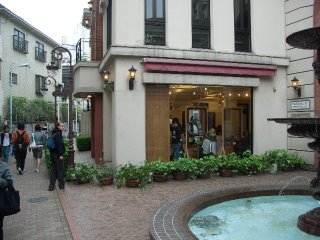

When I was wandering around Harajuku a while back, I discovered a street that I decided to call Hairdresser Street. I kid you not when I tell you that every store was filled with young hip Tokyoites getting preened with the latest hairdo. Prices are competitive. Around 6300 for a cut ($66.00 AUD). I'm not too sure about their English ability. If your planning to get your hair done in Harajuku, I recommend bringing a Japanese speaking friend or a picture of the style you want.
Monday, June 05, 2006
This weeks quiz answer
And the answer is.......B
Yes, my sources tell me (A.K.A high school studnets) wearing a school uniform on weekends is very chic , very cute! The idea is to all look the same. And to be extra cute, sometimes they
tie the two ends of their shirts together for that retro Britney Spears look.
Yes, my sources tell me (A.K.A high school studnets) wearing a school uniform on weekends is very chic , very cute! The idea is to all look the same. And to be extra cute, sometimes they
tie the two ends of their shirts together for that retro Britney Spears look.
Sunday, June 04, 2006
J Quiz!
The time has come to test your knowledge of Japanese culture.This weeks quiz is...
Japanese girls wear school Uniforms on Saturday because...
A) They attend school for half a day on Saturday.
B) It's considered 'cute' to be wearing a school uniform.
C) Their parents can't afford to buy them clothes.
And the answer is.......
Well, I'll tell you tomorrow.
Japanese girls wear school Uniforms on Saturday because...
A) They attend school for half a day on Saturday.
B) It's considered 'cute' to be wearing a school uniform.
C) Their parents can't afford to buy them clothes.
And the answer is.......
Well, I'll tell you tomorrow.
